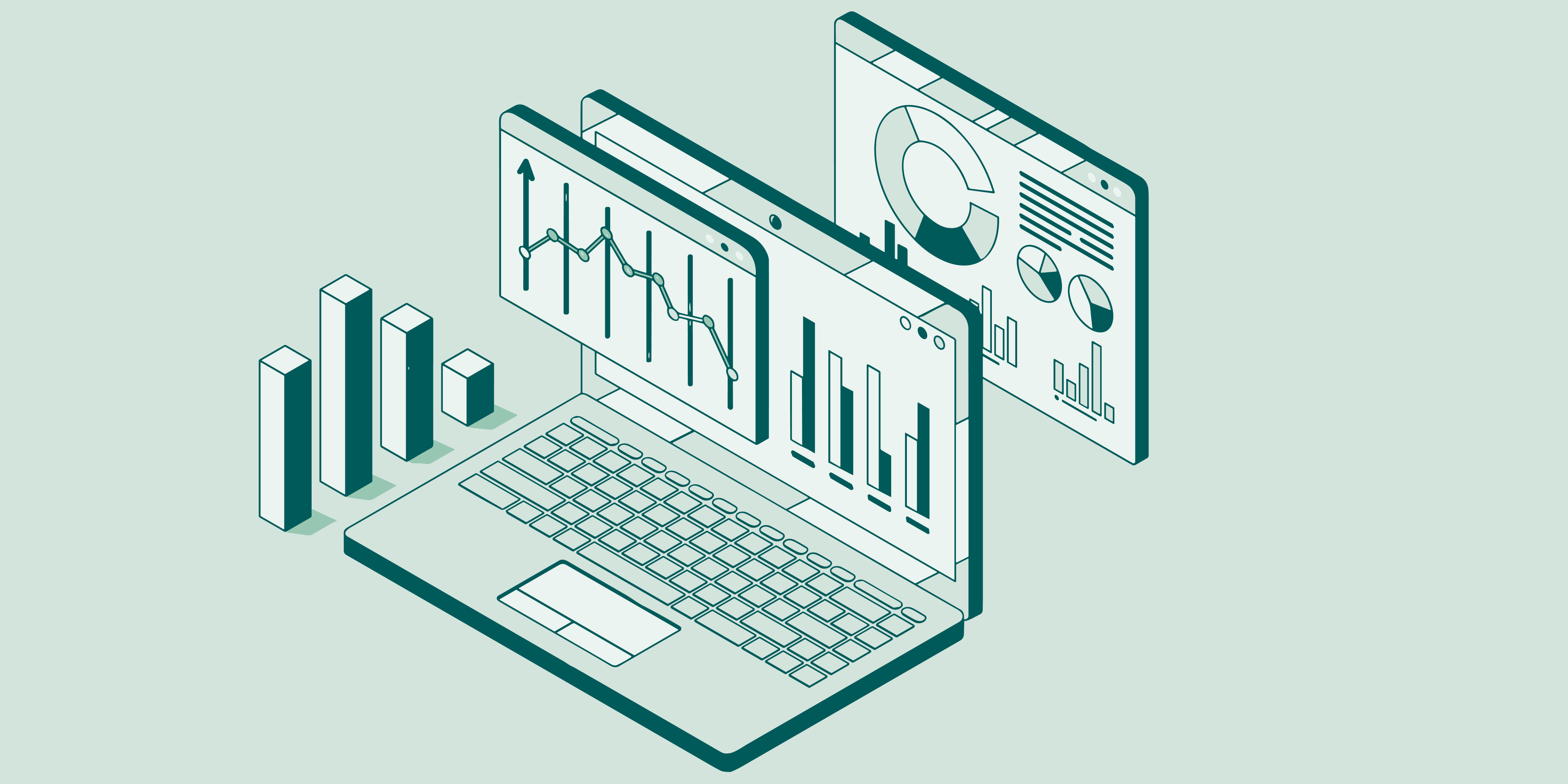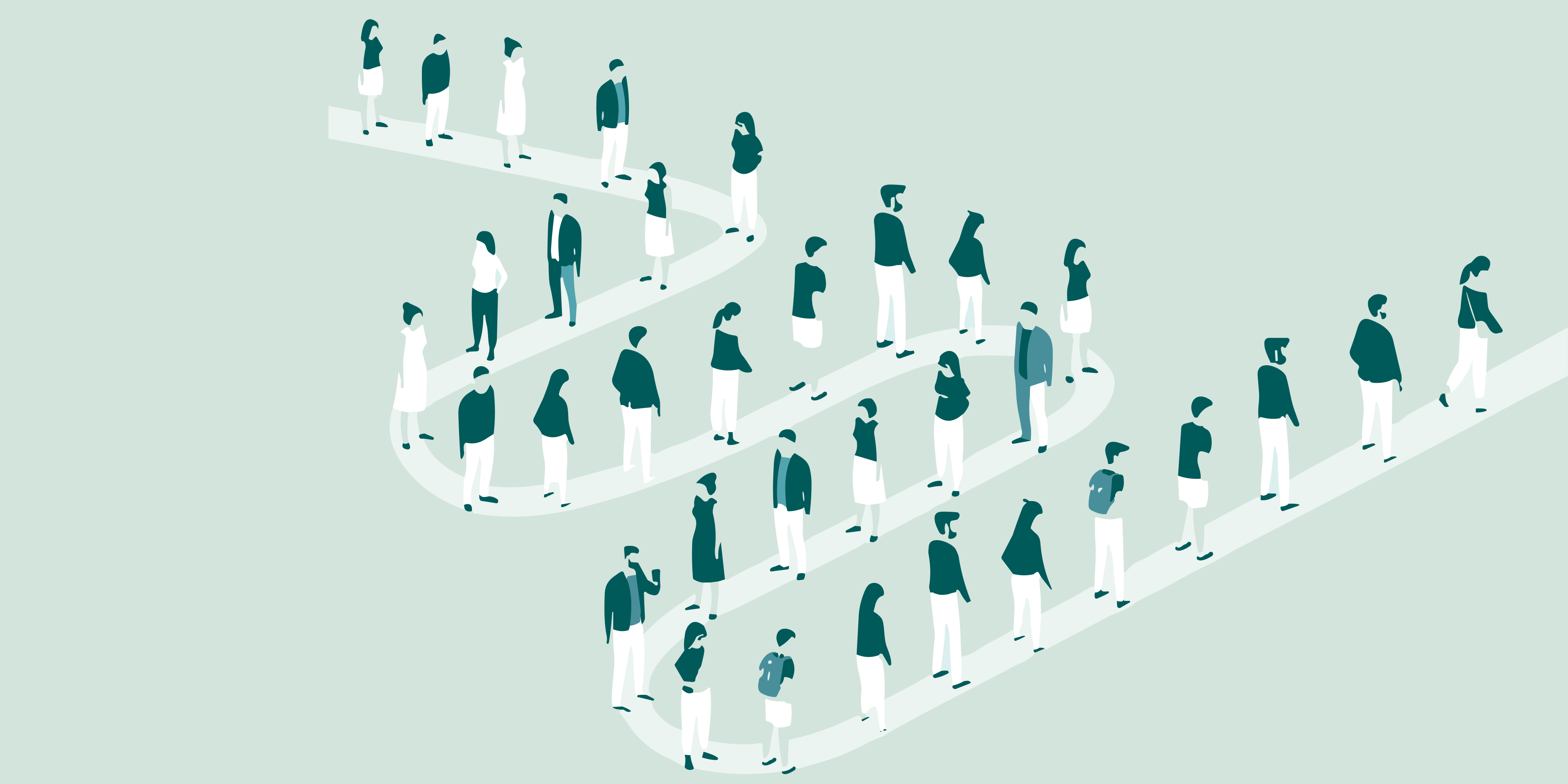If you’ve been searching the web for ‘What is GovTech?’, you aren't alone, and the scarcity of information on the topic doesn't help either.
But you don't have to worry—you've come to the right place! In this guide, we'll define what GovTech is and explore how it's transforming government services.
Before we dive into the details, it's important to note that GovTech includes many solutions from different providers.
For example, Qminder stands out as a GovTech platform for helping governments optimize their customer service through efforts such as queue management, appointment management, analytical insights, and visitor management solutions.
What is GovTech?
Government technology or GovTech refers to the use of modern innovation and technology to improve the accessibility, effectiveness, transparency, and efficiency of government services.
You can also look at government technology as software for moving government services from paper-based legacy systems to modern digital systems.
The GovTech industry includes companies, SMEs, and startups that provide technology services to the government sector, much in the same way ‘MarTech’ companies serve the marketing industry.
What Are the Key Benefits of GovTech?
Here are some holistic benefits of GovTech:
Improved Quality of Life
GovTech solutions help improve people’s quality of life in that service, and operational efficiencies save both staffers and citizens time and money they can dedicate to enhancing other aspects of their lives.
Better Cyber Security
Traditional government services usually rely on old physical servers, which are prone to hackers and data breaches. Cloud solutions are harder to hack than physical servers. They also back up data more regularly, thus reducing the risk of permanent data loss.
Saving Time and Money
GovTech reduces the time it takes to complete government processes. Eliminating traditional paper-based systems with automated paperless systems can save everyone time.
The money automation saves can go into serving your citizens better, and you'll have more time to effect changes.
Seamless Holistic Communications
Intergovernmental and departmental communications get simpler and digital. You can have a single platform for liaising with your staff and reducing the mishaps that stem from miscommunication or lack of communication.
Qminder makes it easy to communicate with your agency’s visitors. For example, you can set up automated messages to send them customized text messages when it’s their turn. Your staff can also forward visitors to another service at your facility when necessary.
Communicating with your constituents later is also easier since government workers can directly contact citizens to update them on the progress of services such as licensing.

Types of GovTech Solutions
As mentioned, there are many types of GovTech solutions. The kind you choose depends on your specific needs, compliance regulations, and funds availability.
Take a look at the these 4 common types of GovTech solutions:
1. Community Engagement Platforms
A GovTech community engagement platform is a tool that helps governments collaborate with their constituents through ideation, workshops, surveys, and other means.
These platforms are ideal for involving communities in decision-making for issues that affect them, such as government budgets.
The Go Vocal platform is a great example. With this digital community engagement tool, governments can involve their communities in decision-making through polls, surveys, messaging, voting, participatory budgeting, and citizens’ assemblies.
2. Public Service and Administration Software
GovTech public service and administration software is a tool for helping governments manage processes, execute functions, and perform administrative tasks.
UrbanFootprint is a good example. This public service and administration platform helps governments manage public assistance programs through data, resource prioritization, risk assessment, and navigating regulatory or compliance hurdles.
3. Finance and Accounting Solutions
Also called fund accounting software, finance, and accounting software are tools that governments use to track, analyze, and report on how they manage and use their funds.
GovTech finance and accounting tools have various features that help with billing, debt management, banking, procurement, budgeting, and payroll management.
MIP Fund Accounting stands out as a government accounting software. Formerly called Abila, MIP is a cloud-based SaaS solution that provides finance and accounting solutions to government agencies and not-for-profit organizations.
You can track and report funds, produce reports for stakeholders, and maintain audit trails.
4. Service Delivery Platforms
A service delivery platform is a digital solution that helps governments improve citizen service delivery.
Our service delivery enhancement, Qminder, is an excellent example here. We help government facilities like DMVs, courthouses, and city halls improve citizen service through appointment scheduling services and queue management software, reducing wait times by up to 50%.
We offer an iPad-based self-service check-in system that minimizes human error in capturing citizen data. You can use the information you collect on citizen visits and staff performance for data-driven decisions.
Sign up for free trial to see how Qminder can help your government facility optimize service delivery.
How Government Technology Works
The functionality of a GovTech system is typically specific to that system. However, there are general functionalities, as discussed below:
Online portals and mobile apps allow citizens to access government services and information and collaborate with government workers conveniently from their Internet-connected devices.
Web-based or cloud-based GovTech applications streamline government-citizen and interdepartmental communications by automating administrative workflows and backing up government data.
GovTech solutions leverage digital advancements such as AI to promote innovation, streamline processes, and enhance communication.
Common Challenges in GovTech Adoption
If you are looking to adopt a government technology solution, you can face the following challenges:
Budget Constraints: Government agencies are constantly pressured to “do more with less" because of tax-cutting measures that reduce government revenue. A recent study at the UC Berkeley Labor Center says that adopting modern government technology services can be challenging on a limited budget.
Multiplicity of Tools and Purposes: As it happens, there are different tools for handling different GovTech needs. Finding one that fulfills multiple needs is rare, such as both accounting and community engagement. You'll have to pay for each tool separately, which can be pretty expensive.
Rapid Development: The government tech solutions industry is quite recent and keeps evolving rapidly. New tools come up often, and you will be left chasing shiny objects, not knowing which option to prioritize or what is best for your government. For example, Government Technology notes the influx of AI-based government tech tools isn’t just hype but a revolution that can disrupt over half of government activities.
Little to No Citizenry Data: 46% of U.S. citizens don't trust the government, meaning asking them for their private information for a GovTech tool can be frustrating. The unwillingness to provide such information can be rampant.
Data Privacy Concerns: Litigations regarding data security and privacy compliance are common bottlenecks to adopting and implementing GovTech solutions. Government Technology acknowledges data breaches and data protection are the most significant digital privacy challenges.
Strategies for Successful Integration of Government Tech
Despite the challenges, the good news is that you can use various methods to adopt and integrate government technologies:
Stakeholder Education: You can teach your workers and constituents the importance of each platform and how to use it effectively. You'll want to teach your workers cyber security best practices, government processes, data literacy, and government tech plans.
Proactiveness: Adopt a proactive approach to finding, evaluating, and acquiring relevant GovTech solutions. Evaluating your most daring needs is a good place to start to determine the type of solution you need.
Continuous Monitoring, Evaluation, and Improvement: Once you have adopted the solution, monitor and evaluate it regularly to see areas where you can improve internally. You can also discover that you have other needs the platform can solve, and your government tech company can develop a new feature within the system.
Employ the Right Leadership: You'll want to work with leaders who embrace government and technology. Engaging your employees throughout the process can also help you make changes easily, navigate resistance to change, and transition successfully.
GovTech aims to optimize government operations, while CivicTech aims to empower community members and promote collaboration between governments and the public.
However, rather than oppose each other, the two are better used together. For example, CivicTech can help you involve your constituents in decision-making, while GovTech can help you respond and act more effectively to this input.
GovTech involves improving the efficiency and effectiveness of government operations.
On the other hand, e-government refers to a wide range of activities like exchanging information and rendering services electronically or online.
Governments can fund GovTech initiatives through tax revenues, public-private partnerships, and borrowing when tax revenues fall short.
Numerous GovTech companies are aligning themselves with government tech AI plans and integrating artificial intelligence into their tools.
For example, we have an upcoming Multilingual Flow feature that will use AI to translate service names and other information at the click of a button.
AI can play other roles depending on the tool, such as:
Predictive Analytics: AI can analyze community data to predict trends and needs to maintain a proactive approach to resource allocation and policy development.
Customized Service Delivery: AI can help with personalized service for individuals, such as through SMS deliveries to specific people based on what they need help with.
Conclusion
Adopting GovTech can be a great way for you to serve your constituents better through improved community engagement and customer service delivery.
When it comes to customer delivery enhancement, you can count on our Qminder platform to help you manage visitors and appointments, increase customer satisfaction, and reduce wait times by half.






